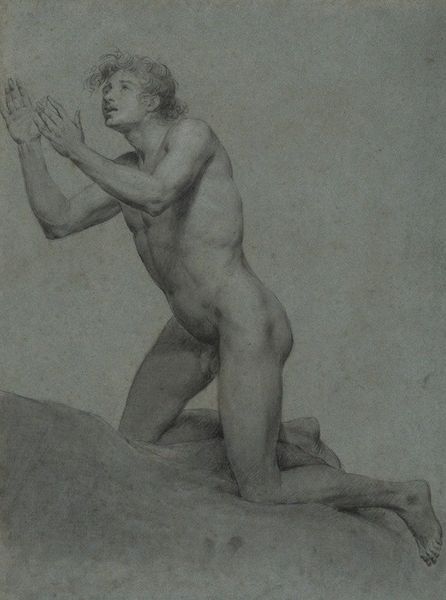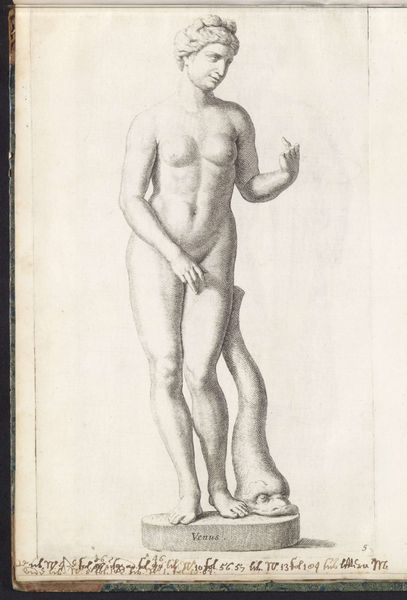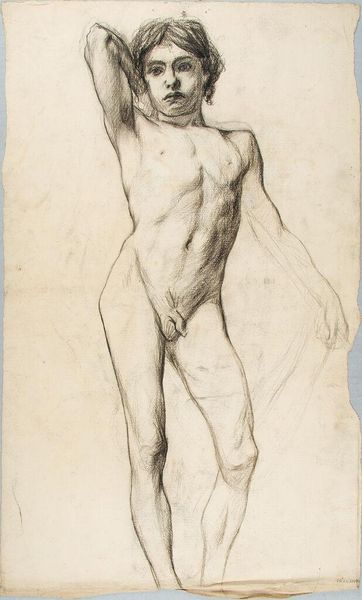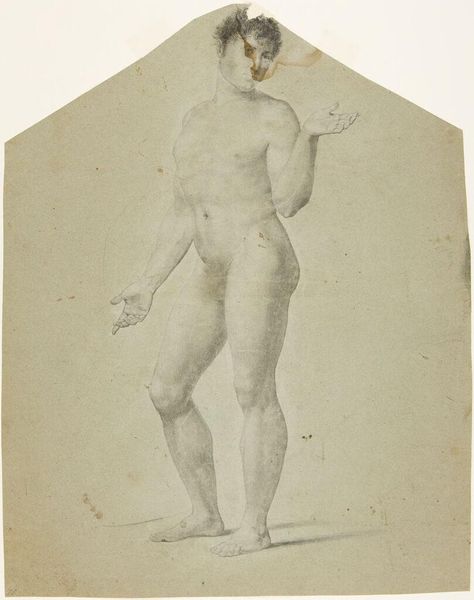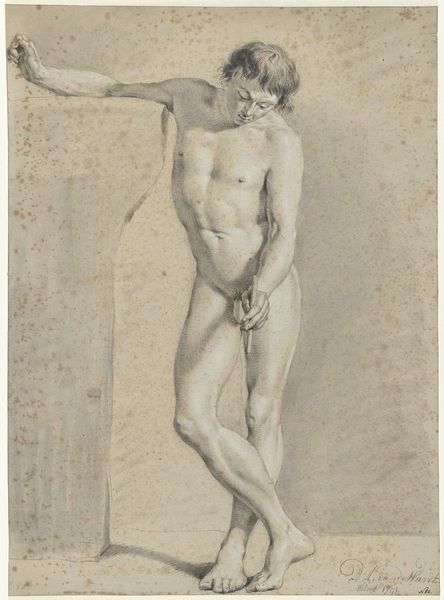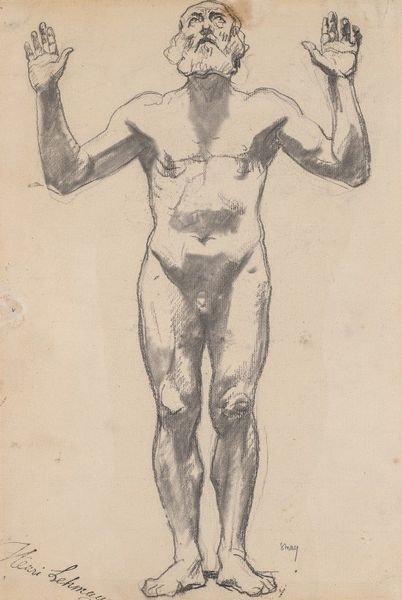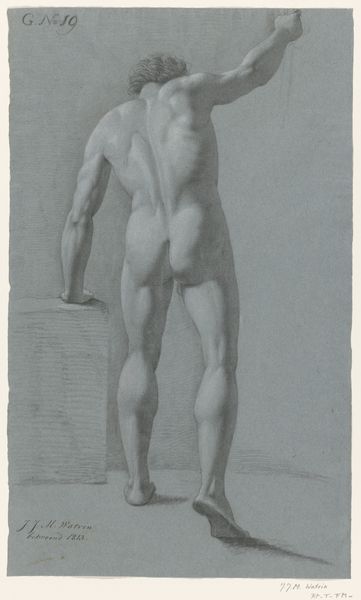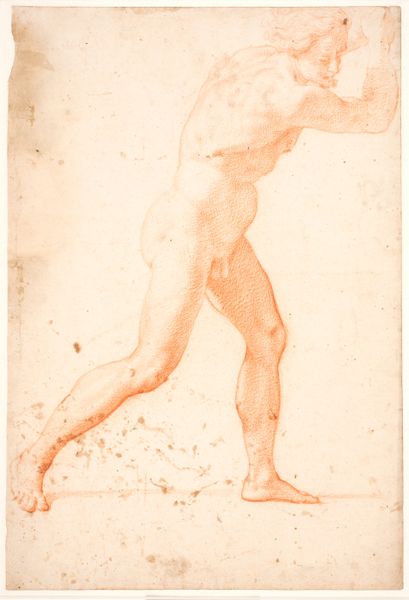
drawing, pencil
#
drawing
#
figuration
#
pencil drawing
#
sketch
#
pencil
#
human
#
portrait drawing
#
academic-art
#
nude
#
realism
Copyright: Public domain
Editor: This is Charles Gleyre's "Etude Pour Le Retour Du Fils Prodigue," a pencil drawing. The figure, seemingly suspended in a blank space, feels quite vulnerable. How would you approach understanding this study? Curator: As a materialist, I’m immediately drawn to the 'how' of it all. The drawing is executed in pencil, a relatively accessible and reproducible material, indicative of the shift towards wider artistic production in the 19th century. The social context surrounding the making of this study is quite important. Was it commissioned, or a personal study? Who was Gleyre trying to reach, what audience was he picturing when laboring on it? Editor: That's interesting! I hadn't considered the socio-economic factors behind choosing such a common medium. How does that choice affect the way we interpret the "Prodigal Son" theme itself? Curator: Precisely! The 'Prodigal Son' is ripe with symbolic connotations. Yet here, removed from any luxurious surroundings typically associated with the narrative, the material reality strips away artifice. The labour required to produce it with "common" pencil also brings humbleness and rethinks traditional high/low art boundary. We have to also wonder: what other means and people went into it's creation and survival over time, from suppliers of materials to handlers and exhibitors? Editor: So, focusing on the material and its social life allows us to re-evaluate even canonical stories. It’s fascinating how the simple pencil connects to a broader cultural shift! Curator: Indeed. Thinking through the lens of materials opens up critical discussions about production, accessibility, and ultimately, the democratisation of art itself. Editor: I'll definitely look at art through a new lens going forward, thinking more about the production process. Thanks!
Comments
No comments
Be the first to comment and join the conversation on the ultimate creative platform.
